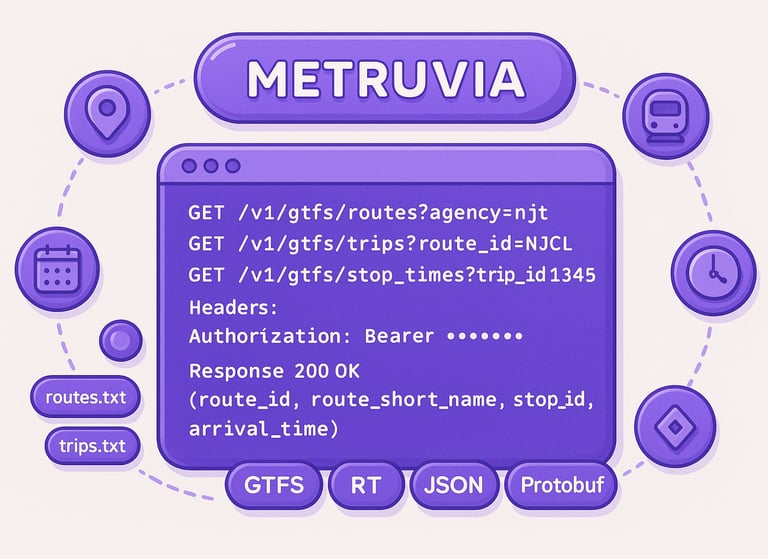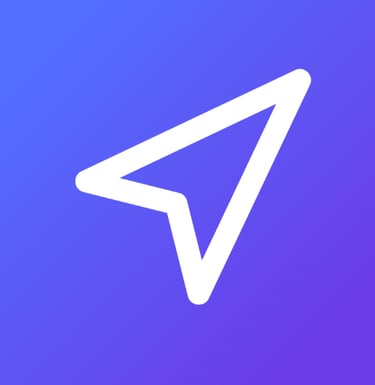GTFS for Metruvia
As a third-party application, Metruvia uses GTFS feeds to effectively access, process, and present real-time and scheduled train information to riders in the many regions. Instead of creating and maintaining its own data, Metruvia leverages the comprehensive GTFS data published by Transit Agencies, enabling it to function as a specialized, user-friendly portal for Metra ridership.
Here is a breakdown of how Metruvia utilizes GTFS:
Data consumption: Metruvia regularly downloads and processes for example, Metra's GTFS Schedule data, which includes information on routes, stops, and static timetables. This forms the backbone of the app's functionality.
Real-time updates: To provide a live view of service, Metruvia accesses Metra's GTFS Realtime API. This feed is updated frequently—every 30 seconds, according to Metra's developer documentation—and provides the following dynamic information:
Vehicle positions: The current location of trains is displayed on the app's map.
Trip updates: The app shows real-time delays, cancellations, or other changes to scheduled trips.
Service alerts: Users are notified of any disruptions, such as accidents or track work, that may affect their commute.
Enhanced user experience: Metruvia differentiates itself from other trip-planning apps by focusing exclusively on Metra and developing unique features for its riders. This is done by building its own interface and adding functionality on top of the raw GTFS data. Examples include:
Route Cards: The app features a ranking algorithm to prioritize and display upcoming trips on the homepage.
Dynamic filtering: Route cards include filtering options and automatically shift focus to the next relevant departure as a trip completes.
Trip completion status: The app uses the GTFS data to determine when a trip is finished and visually updates the card, which also allows it to stop unnecessary background data polling.
Efficiency: By adhering to the GTFS standard, Metruvia can focus on its own application logic and user interface rather than on the complex task of creating and maintaining its own schedule and real-time data feeds. This model benefits both the developer (Metruvia) and all transit agencies tracked by the Metruvia App, which can publish its data openly and support a wider ecosystem of digital tools.


